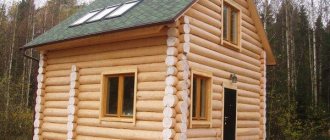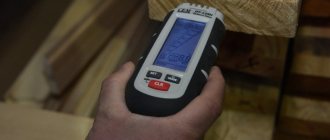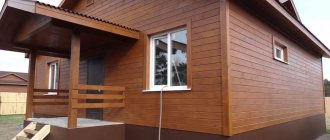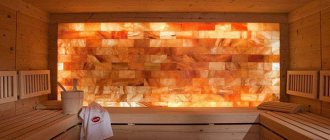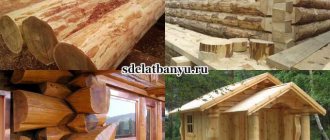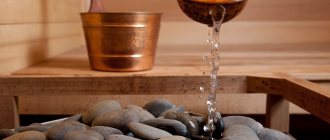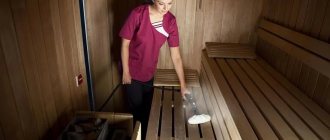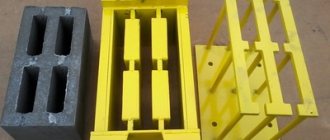Despite the emergence of new synthetic and polymer materials, traditional raw materials, such as natural wood, do not lose their relevance and are actively used in various areas of our lives. And the need for its production is constantly growing. However, compared to other trees, aspen, which is one of the most common woody plants of the Eurasian continent, seems to be a little underestimated and undeservedly “pushed into the shadows.”
Baths and log houses made of aspen
One of the characteristic qualities of common aspen is the high hygroscopicity of its wood, which is why it is often used for the construction of baths and wells.
The main advantages of bathhouses built from aspen timber include:
- Durability and reliability. With high-quality drying of aspen timber used for the construction of a bathhouse, this material gains strength comparable in strength to concrete. Moreover, these characteristics improve even more over time.
- Good moisture resistance. Unlike many trees of other species, aspen does not rot or deteriorate when exposed to water.
- No resinous secretions. Thanks to this, aspen baths do not require additional interior finishing.
- Pleasant unobtrusive aroma. The wood of this tree has a light and pleasant smell, which does not change its intensity when this material is heated.
- Low price. Due to the low cost of raw materials (for example: a cubic meter of unedged aspen board costs approximately 4000-4300 rubles), the construction of bathhouses from aspen is very inexpensive.
- Presence of bactericidal qualities. Even in ancient times, people noticed that the water in wells built from aspen remained clean for a long time, did not rot or bloom, so dishes and utensils were also made from this wood. And in the bath, thanks to the heating of the wood, these qualities were enhanced even more.
Photos of bathhouses and log cabins built from aspen timber
Bathhouse No. 1
Bathhouse No. 2
Log house No. 1
Log house No. 2
Log house No. 3
What is the value of Aspen wood?
Aspen is grown on an industrial scale or parts of wild trees are used. The bark is prepared for the winter and eaten to tonify the body and strengthen the immune system. Branches are added to sauerkraut to increase shelf life. Previously, flour was prepared from this plant, which was used in baking bread. Now this tree is valued for its high-quality wood, and also continues to be used in folk medicine.
The sex of a tree can be determined by the color of the inflorescences.
At home
Despite its ubiquity (aspen can be found throughout Europe and, partly, Asia), its low cost and ease of processing, aspen is rarely used for the construction of houses and farm buildings.
For a long time, people have treated it with some distrust, considering it a weed and unnecessary plant. In addition, according to ancient legend, aspen was the very tree on which Judas Iscariot, who betrayed Jesus Christ, hanged himself by selling him for thirty pieces of silver, so it was believed that the wood of this tree has negative, dead energy.
These beliefs can be treated differently. However, there are very real arguments against using aspen wood as a building material for the construction of houses.
These include:
- Insufficient quality of raw materials. Indeed, in order to find a timber suitable for the construction of a log house, you will have to spend a lot of time. As a rule, no more than 10% of the material from this tree has the required characteristics.
- Susceptibility to shrinkage. Since aspen has high natural humidity, its wood can be used for construction only after thorough drying. However, during this process it is greatly turned out and twisted.
When building houses from aspen, the quality of the timber used is of decisive importance, especially its humidity, which should not exceed 20%. Some experts recommend using aspen only for laying the first crown of a house made of timber, since it resists rotting well and is characterized by increased strength, and the frame itself should be made of pine.
This move will reduce the cost of construction, since the cost of selected quality aspen timber is quite high - from 10,000 per cubic meter. meter and above.
Where do aspens grow?
The aspen genus grows in almost all regions of Asia, Europe and northern Africa; they can be found in almost all regions of Russia, China, Mongolia or Kazakhstan.
They can be found both in mixed forests next to coniferous trees and form aspen forests, where mushroom pickers love to gather.
- The tree grows primarily in forest-steppe or forest zones, but has the ability to grow even in the mountains, at an altitude exceeding 2000 m.
- A cold, dry climate with little precipitation and dry soil will be comfortable for aspen to live.
- The tree also needs good lighting.
In such conditions, the tree reaches its maximum growth rates and can live up to almost a hundred years.
In dark places without sunlight, its crown quickly withers and the plant dies.
Eurolining, floorboard, unedged aspen
For the interior decoration of baths and saunas, euro-lining made of aspen is used, which is distinguished by its attractive appearance, good moisture resistance and durability.
Its advantages:
- Elegant white color and almost complete absence of knots, due to which a room decorated with this material looks very cozy and neat.
- Not susceptible to rotting and cracking during operation. In a humid environment, euro-lining made from aspen feels excellent, and when dry, it does not change its shape or crack.
- Thanks to the increased dimensions of the groove and tongue, the aspen lining is firmly and reliably fixed to the base, which avoids the occurrence of cracks as a result of constant exposure to humidity and high temperature.
Its dimensions: working width without tenons – 88 mm; width with spike – 96 mm; thickness – 12.5 mm. The length range of the planks is from 1 to 3 meters.
According to a number of characteristics and external qualities, aspen eurolining is divided into 4 grades:
- “EXTRA”, characterized by increased quality, without knots or defects.
- “A”, “B”, “C”, differing from each other by the presence of a certain number of knots and other defects per linear meter.
The video shows aspen lining and its features:
In addition, floorboards are also produced from aspen, which are of fairly high quality and are suitable for finishing baths and saunas. Using a five-point rating scale, this material can be rated “excellent” for its environmental friendliness, visual appeal and durability.
Aspen floorboards are characterized by good hygiene and high wear resistance, so they can be used for a long time without additional repairs or treatments.
In addition, when heated, an aspen floorboard does not burn your feet, which allows it to be used as a very practical and convenient material for finishing the floors of steam rooms and bath rooms.
To perform rougher, “rough” construction work, unedged aspen boards of natural moisture are used. Most often it is used for the manufacture of various types of flooring, as well as the construction of sheathing, elements of load-bearing structures and other works.
A distinctive feature of this material is low cost with high strength and durability.
Doors
In addition to being used as a practical and reliable material for the interior decoration of saunas, aspen wood is used to make durable and inexpensive sauna doors.
Door leaves made from this wood have virtually no cracks and do not change their shape and geometry during operation, under constant exposure to high temperatures and humidity.
Their main advantages are:
- Affordability.
- No need for additional care and ease of working with the material (Aspen does not emit resins and can be easily processed with any cutting tool).
- Lightness, high moisture resistance, thanks to which the door made of aspen does not allow valuable and healing steam to escape from the steam room.
Since the texture of aspen is not particularly expressive, to improve the appearance of the door it is often coated with various stains and varnishes. The door leaf is usually made from selected grade wood, with a minimum of knots and defects.
To make the box, simpler and cheaper raw materials are used, since it is closed with a platband and does not stand out in the interior.
Disadvantages: darkening over time and the possibility of hidden rot.
Photos of log houses and doors made of aspen
Doors No. 1
Doors No. 2
Doors No. 3
Doors No. 4
The difference between aspen and poplar
It is not difficult to find signs of how poplar differs from aspen. There are several reliable signs:
- Branches from both trees with dormant buds broken in early spring should be placed in a glass of water. The poplar will be the first to start growing and spread its sticky leaves, while the aspen will wake up later and its leaves will not have such a pronounced shine.
- The aspen blooms first, followed by the poplar. Moreover, only the poplar will give abundant fluff.
- The structure of leaf petioles in the two species is different: aspen petioles are long and easily tied into a knot, while poplar petioles are short.
- Aspen branches are more fragile and break easily from force, while poplar branches are more likely to bend than break.
- If you compare the leaves, they have a lot in common, but there are also differences - the shape of the poplar leaf is more elongated and pointed.
Article on the topic: We build a cinder block house with our own hands. Technology and step-by-step construction instructions
Furniture panels made of aspen
People have been using furniture made from natural wood since ancient times. And today it does not lose its relevance and popularity. For its production, wood of various types is used, including common aspen.
Depending on the size of the pressing equipment used, panels, facade elements, decorative panels, etc. are made from it. In this case, the initial wood raw material, which is a 30 mm board with a moisture content of 80%, undergoes pre-treatment: it is impregnated and dried for 70 hours to a moisture content of 10%.
Aspen for soil cultivation
Aspen improves the properties of the soil on which it grows. In autumn, abundant leaf fall can be observed, and trees also shed small branches. Over the winter, this material undergoes a series of chemical transformations and becomes a useful fertilizer. In addition, the root system has its own characteristics. The roots are shallow, but spread over a considerable distance. In the soil in which the aspen grew, multi-level passages remain, which are used by more demanding crops. The cultivation of this species is practiced to improve clayey and insufficiently fertile soils with low moisture conductivity.
Aspen has a powerful root system and often displaces other plants.
Lumber
Since aspen wood raw materials have a number of specific characteristics, they cannot be classified as universal materials that are widespread in construction and industrial production. Therefore, lumber from this tree, for the most part, has limited use.
One of the advantages of lumber is its low cost, however, this only applies to “rough” wood, which has a fairly large rejection rate of about 60-80%. For exterior work, the upper part of the tree is used, since its middle often rots during growth.
Lumber is subject to severe shrinkage and changes in volume and weight during drying, so it is not of great value as a building material.
Properties and characteristics
Aspen belongs to the extensive genus of poplars, the willow family. According to the structure of the trunk, this is a coreless, diffusely woody tree species. In Russia, this tree is found everywhere in the European and Asian parts of the country, from deciduous forests of mid-latitudes to tundra zones.
This tree grows up to 150 years, but the cause of its death is often not age, but rot that affects the core of the trunk, so trees between 30 and 50 years old are usually chosen for industrial felling. During this time, the tree reaches a height of 35-40 meters.
Aspen wood is dense, with poorly visible growth rings, and uniform in structure. The moisture content of the wood in the central part is lower than in the peripheral areas of the trunk. The color of the wood is white, grayish-white, sometimes greenish. In the cut, it is impossible to notice the rays emanating from the center. For some decorative work, such wood is valuable precisely because of its uniformity. After staining or painting, the structure of the wood remains uniform and does not reveal any structural elements.
The moisture content of a freshly cut tree is about 82%, while the maximum moisture content of this wood (when soaked) reaches 185%. With high atmospheric humidity, aspen quickly absorbs water, but also quickly loses it when drying, which is a positive quality.
In terms of resistance to biological factors, wood belongs to the lowest, fifth class (according to the ISO EN 350-3:1994 standard).
There are a total of five classes in the above standard. The first class of resistance includes, for example, Indian teak and Australian eucalyptus. Larch and oak are classified as class 2 in terms of wood stability. In Russia, the resistance of a tree to the effects of fungi and mold is determined in dimensionless conventional units. According to the Russian classification, resistance to fungi is 1.2 units for mature wood, and 1 for aspen sapwood.
Wood processing
Being a fairly common and accessible natural raw material, aspen lends itself well to various types of mechanical processing: sawing, cutting, peeling, planing, etc. The largest percentage of material entering processing falls on plywood-match, pulp and paper, container production and sawmilling.
Since aspen wood survives peeling and planing operations well, it is successfully used for the manufacture of plywood and matches. At the same time, it is especially highly valued in match production.
Due to the absence of resinous and aromatic secretions, aspen wood is suitable for the production of barrels and boxes. Also, this material, which has a natural white color and a sufficient length of fibers, is used for the manufacture of paper and cardboard, fiberboard, particle boards, etc.
In addition, after appropriate processing, aspen wood can serve as a raw material for hydrolysis-yeast production, the production of a petroleum fuel substitute and other purposes.
The video shows the processing of aspen waste from a match factory on a granulation line:
Industrial felling of aspen
The international standard for industrial wood is called DIN 4076. Aspen wood belongs to group AS.
In Russia, industrial cutting of trees is carried out in wild forest plots, which are then restored naturally. In Western Europe, in recent decades, trees for industrial felling have increasingly been grown in nurseries. These are the so-called short-cycle forest nurseries. They grow primarily fast-growing tree species (poplar, aspen). This approach to environmental management makes it possible to preserve natural forests and grow wood of the required parameters.
